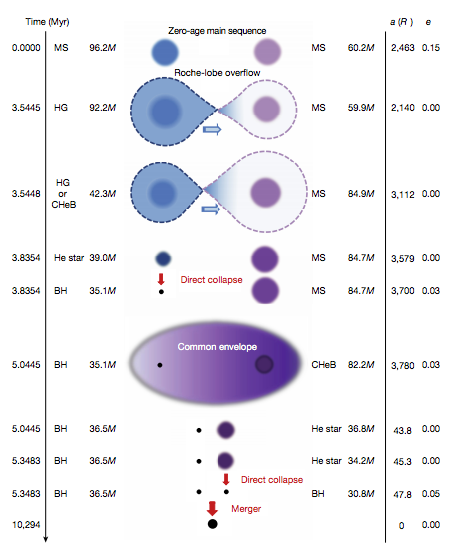Gravitational waves made big rumbles through the astronomy community earlier this year when it was revealed that these ripples in time-space itself had been detected. While we knew the source of the waves — the merger of two 30 solar mass black holes — we didn’t know where they came from. While primordial black holes that formed seconds after the universe was expanding outward were suggested, a new study in Nature points to another possible scenario: a pair of giant stars that wormed as binaries and both exploded as supernovae.
The stars were between 40 and 100 solar masses each, according to the study. That puts it in the realm of hypergiant stars, which live fast and die hard, often in a few million years. They would have possibly been like the Eta Carinae system, which has two hypergiant stars in a binary orbit. The stars probably formed around 11 billion years ago, and exploded shortly after that. Each of the stars subsequently formed into black holes, which converged around 1.4 billion years ago. (The newly formed black hole, called GW150914, is about 1.4 billion light years away.)
There’s a small chance, as suggested in the paper, that the stars are only around 2 billion years old, which would give an even smaller time table for the formation of the merger. One of the stars was likely slightly more massive, upwards of 100 solar masses, while the smaller of the pair would have topped out at 80 solar masses. (The paper suggests 40 solar masses as the lower limit for both.)
The authors of the paper also conclude that, with the right instrumentation, we might hear up to 1,000 black hole mergers per year and be able to study the gravitational waves. Perhaps the era of gravitational wave astronomy really is upon us.










